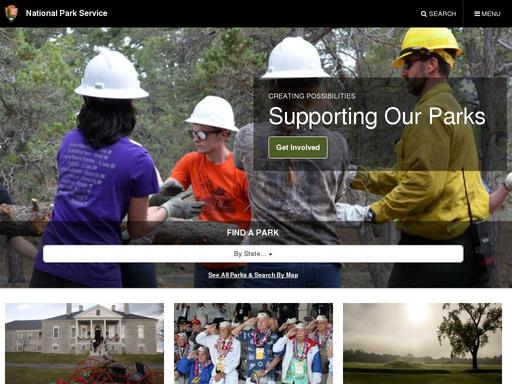Rate Katmai National Park & Preserve
Learn and Explore
Since 1916, the National Park Service has been entrusted with the care of our national parks. With the help of volunteers and partners, we safeguard these special places and share their stories with more than 275 million visitors every year. But our work doesn’t stop there.
We are proud that tribes, local governments, nonprofit organizations, businesses, and individual citizens ask for our help in revitalizing their communities, preserving local history, celebrating local heritage, and creating close to home opportunities for kids and families to get outside, be active, and have fun.
Taking care of the national parks and helping Americans take care of their communities is a job we love, and we need—and welcome—your help and support.
Our Mission
The National Park Service preserves unimpaired the natural and cultural resources and values of the National Park System for the enjoyment, education, and inspiration of this and future generations. The Park Service cooperates with partners to extend the benefits of natural and cultural resource conservation and outdoor recreation throughout this country and the world.
Frequently Asked Questions
How do I obtain a park entrance pass?
Only 118 of your 417 park sites charge entrance fees. You can obtain park entrance passes by visiting a park site that charges an entrance fee. Entrance fee sites have passes available; we recommend calling a park prior to your visit. (See the park search to locate a specific park.) There are a number of entrance passes available, including park-specific passes as well as passes that offer entrance to more than 2,000 federal recreation sites in addition to the national parks (Annual, Military, Senior, 4th Grade, Access, and Volunteer passes). Learn more about the America the Beautiful – The National Parks and Federal Recreational Lands Pass.
About this location:
National Park & Preserve
Operating Hours & Seasons
Katmai National Park and Preserve
Katmai is open 24 hours per day, seven days per week.
Standard Hours
- Sunday:Open 24 hours
- Monday:Open 24 hours
- Tuesday:Open 24 hours
- Wednesday:Open 24 hours
- Thursday:Open 24 hours
- Friday:Open 24 hours
- Saturday:Open 24 hours
Fees & Passes
Entrance Fees:
- $0.00 – Katmai National Park and Preserve
There is no entrance fee for Katmai.
Entrance Passes:
- $0.00 – None
No entrance passes are necessary to enter Katmai.
About
Welcome to Katmai Country
Katmai National Monument was established in 1918 to protect the volcanically devastated region surrounding Mount Katmai and the Valley of Ten Thousand Smokes. Today, Katmai National Park and Preserve remains an active volcanic landscape, but it also protects 9,000 years of human history as well as important habitat for salmon and thousands of brown bears.
Directions
Katmai National Park & Preserve is located on the northern Alaska Peninsula, northwest of Kodiak Island and southwest of Homer, Alaska. The park’s headquarters is in King Salmon, about 290 air miles southwest of Anchorage. Unlike most national parks in the United States, Katmai is almost exclusively accessed by plane or boat.
Visitor Centers
Brooks Camp Visitor Center
The Brooks Camp Visitor Center, open June 1–September 17, is the point of entry for all visitors to Brooks Camp. A park ranger is on duty to provide information, campground check-in, mandatory bear etiquette and safety talks, and backcountry planning. An Alaska Geographic Association (AGA) bookstore offers books, maps, and other Katmai-related items. King Salmon Visitor Center
Located next door to the King Salmon Airport, the King Salmon Visitor Center provides information on the many federal public lands of Southwest Alaska, particularly those in the Bristol Bay area. A large collection of films is available for viewing and an AGA bookstore sells maps, charts, videos, posters, clothing and more.
Weather
Located between the stormy north Pacific Ocean and the even stormier Bering Sea, the Katmai region is often a battleground between weather systems. When you visit, be prepared to encounter all types of weather. On average, wet and cool conditions predominate in spring, summer, and fall. Winters are drier and colder.





